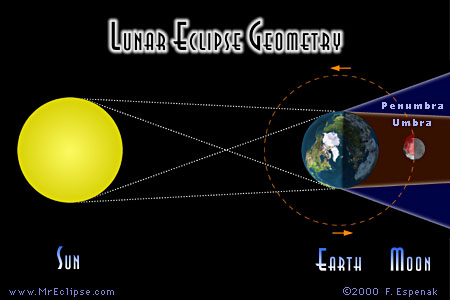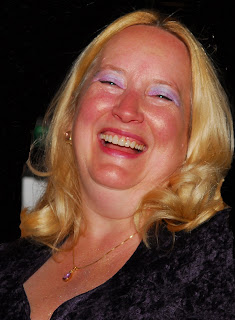
 She said, "This woman's brain intimidates me..." Now I'm not quite sure that is a compliment! I don't really want to intimidate anyone. If anything, I try and help explain science to the layman/woman because I don't think it should be intimidating. But I will accept the award in the spirit that it is given and will be passing along my nominees in a future post. (And BTW, thanks Thalia's Child, it is nice to get blog bling!)
She said, "This woman's brain intimidates me..." Now I'm not quite sure that is a compliment! I don't really want to intimidate anyone. If anything, I try and help explain science to the layman/woman because I don't think it should be intimidating. But I will accept the award in the spirit that it is given and will be passing along my nominees in a future post. (And BTW, thanks Thalia's Child, it is nice to get blog bling!)But I have heard comments from others who think I am pretty brainy. "Whiked smaaht" as SMID would say! So now I guess I have a reputation to maintain. Therefore I will tell you about the upcoming total lunar eclipse.
This is happening on Wednesday night (20-21.February.2008) and will be visible from most of North America as well as South America, Western Europe, Africa and Western Asia.
A total lunar eclipse is pretty special. Lunar eclipses only occur during the full moon, and while there is usually one of those a month, because the Moon's orbit around the Earth is tipped 5 degrees compared to Earth's orbit around the Sun, the Moon does not usually pass through the Earth's shadow. But about 2 - 4 times a year, it does pass through all or part of the shadow, and an eclipse occurs.
Now maybe you will hear some talking head on the TV speak about partial eclipses, umbral and penumbral shadows, and you'll think "Huh"? This is just fancy scientist talk. The Earth's shadow is actually composed of two cone-shaped parts, one nested inside the other (see diagram below) . The outer shadow or penumbra is a zone where Earth blocks some (but not all) of the Sun's rays. In contrast, the inner shadow or umbra is a region where Earth blocks all direct sunlight from reaching the Moon. In fact, so little light is blocked during the penumbral lunar eclipses that they are not really visible to the untrained naked eye. But scientists love using big words that no one understands, so one of them might mention this. Ignore this discussion.

More common events are partial lunar eclipses. This is where the Moon passes through only part of the Earth's umbral shadow. That means you see a the Full Moon which gets a "bite" taken out of one side that slowly grows bigger and then gets smaller. There will be a partial lunar eclipse visible from parts of Europe on August 16th this year.
But you really should try and view all or part of the eclipse this week if the weather in your area permits. Some of you in the western US or Australia might have had an opportunity to see the total lunar eclipse in August last year. But another total eclipse will not occur until 2010. So set your alarms or stay up late and hope for good weather!
Here is a table of the viewing times for your locations:
| Total Lunar Eclipse of February 20, 2008 | |||||||||
|---|---|---|---|---|---|---|---|---|---|
| North America | Other | ||||||||
| Event | AST | PST | MST | CST | EST | GMT | GMT+1h | GMT+2h | |
| Partial Eclipse Begins: | 04:43 pm | 05:43 pm | 06:43 pm | 07:43 pm | 08:43 pm | 01:43 am* | 02:43 am* | 03:43 am* | |
| Total Eclipse Begins: | 06:01 pm | 07:01 pm | 08:01 pm | 09:01 pm | 10:01 pm | 03:01 am* | 04:01 am* | 05:01 am* | |
| Mid-Eclipse: | 06:26 pm | 07:26 pm | 08:26 pm | 9:26 pm | 10:26 pm | 03:26 am* | 04:26 am* | 05:26 am* | |
| Total Eclipse Ends: | 06:51 pm | 07:51 pm | 08:51 pm | 09:51 pm | 10:51 pm | 03:51 am* | 04:51 am* | 05:51 am* | |
| Partial Eclipse Ends: | 08:09 am* | 09:09 pm | 10:09 pm | 11:09 pm | 12:09 pm | 05:09 am* | 06:09 am* | 07:09 am* | |
The UK and parts of western Europe are on GMT time. The Netherlands, Germany, etc. are on GMT +1. This means I'll be getting up about 4 AM (yawn!).
So what is so special about a total lunar eclipse? Won't it just look like the Moon going through all its phases within a short space of time? Yes it will. Kind of. Maybe. You see the direct light from the sun will be blocked by the body of the earth. But sunlight also passes through the Earth's atmosphere and bends. So just like dawn and dusk are not completely dark, even though the sun is still below the horizon, some light from the sun will reach the moon and the shadow will not be completely dark. Thus the shadow from an eclipse is not like the "phase" of the moon because no sunlight is shining on the dark part of the moon when it is not "full". (This is a trick question for kids in science, when they say that the dark part of the lunar phase is the shadow of the Earth blocking the Sun from the Moon!)
So what can we expect? The most beautiful total lunar eclipses are when the Earth's atmosphere filters out the blue portions of the sunlight and only allows the redder portions of the light to come through. So we could see a "blood red moon". In some earlier times and cultures this was a portent of evil or misfortune or the approach of a terrible event. I don't doubt that there will be something that occurs in the coming year that might be linked back to this event. In fact, I will even predict that someone will make this link! Check back with me in a year and I'll be happy to say "I told you so"!
If the Earth had no atmosphere, then the Moon would be completely black during a total lunar eclipse. But it can actually take on a range of colors and even change during the event. It can range from yellow to orange or red to dark brown. It will depend on how much dust, pollution and clouds are present in the atmosphere. After the volcano on Mount Pinatubo in 1992, the December total lunar eclipse was dark brown and almost black.
And of course you should look for Mars, which is the reddish object shining brightly just above
Orion. Through the course of the night Mars and Orion descend toward the western horizon.
Saturn is visible as a bright yellowish object in the late evening in the southeast sky.





8 comments:
Thanks so much for the viewing chart! We'll definitely be out viewing. And congrats on the award! You totally deserve it. ;-)
It was totally a compliment!
It takes a pretty special person with a pretty incredible intellect to be able to able to make complex scientific stuff comprehendable to lay-folk. And you do that so well (as evidenced by this post).
I'm going to have to make sure Punkin is stashed in bed on time on the 20th, so I can bundle up and sneak outside.
Way cool and I would wake up at 3:00 am if I was guaranteed it wasn't going to be foggy and cloudy but chances of that are slim.
I'm watching it now -- it's totally amazing!
Just as the time was sneaking up on us for the eclipse, so was a huge blanket of fog and cloud cover :( I was so bummed and so were the kids. As for your comment on my blog, I just had to say, take heart. I am learning to not get sucked into the emotions as much. They can seem suicidal one moment and be on cloud 9 the next, so it pays to try to keep a clear head and wait and watch a bit. As for the two for one on being committed somewhere, if it's anything like having twins, the best you will get is buy one get one half off! Good luck and hang on to your hat. Try to enjoy the ride!
I should have known that you would post about this. I did my part. On Wednesday I told everyone I knew about the eclipse and even posted a Twitter update about it as it started in my area.
Sadly I had perfectly clear weather for the beginning of the eclipse but at around 9:45 pm the clouds rolled in. By 10 o'clock I wouldn't have been able to see the moon even if it were still visible.
As always I love your scientific explanation. :)
Congrats on your bling.
and don't make fun of SMID. You are "wikid smaht" (yeah, I'm a Bostonian too. Our accent rocks!) ;)
Indeed, darlin', you are wicked smart and completely intimidating in the brain department. Okay, in every department, let's all be serious.
Fun post. I didn't get up to see it, but it's nice to hear that others got the chance to view the great event!
You totally deserve the award! You are totally smart. I bet your brain has a new car smell. Or maybe citrus. Citrus is a smart smell. OR PEPPERMINT. Yeah, I think peppermint is the smartest smell.
We watched the eclipse at our house! I told Julia about it earlier in the day, but then forgot about it. Julia didn't though. And when it began, she was calling for me to come to the window and watch. She was so excited. It was a great moment.
Post a Comment